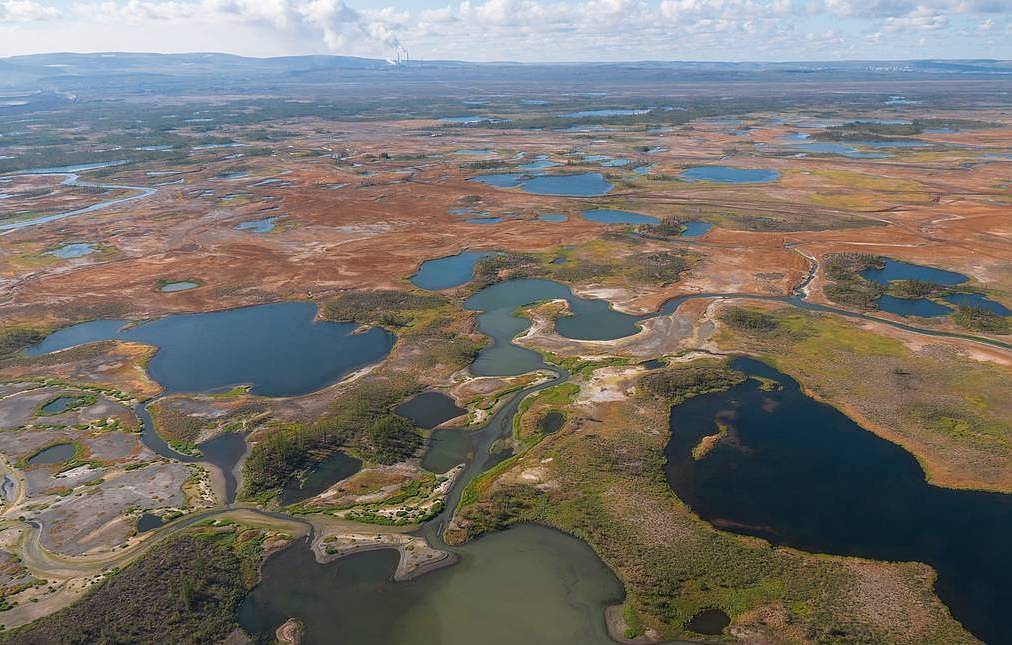Damage from permafrost thawing in Russian Arctic may top $85B by 2050, ministry reports

MOSCOW, April 12. /TASS/. The damage to industrial civil facilities from the thawing perennially frozen ground (permafrost) in the Russian Arctic may reach 7 trillion rubles ($85 billion) by 2050, the Ministry for Development of the Far East and Arctic's head of the Department for Development of the Russian Arctic Zone and Infrastructure Projects, Maxim Dankin, said.
The bill on a state permafrost monitoring system was submitted to the State Duma (parliament) in November, 2022. The system will be created in two stages. It will be based on the observation network of Roshydromet (the national hydrometeorology service), and Roshydromet will conduct the monitoring. The first stage will begin in 2023 - to develop monitoring methods and technologies, as well as their verification in the Arctic zone. The second stage (2024-2025) is aimed at organizing of the state background monitoring of the permafrost conditions.
"The possible damage from the warming cycle to industrial civil facilities in the Russian Arctic may amount to about 7 trillion rubles by 2050," he said at parliamentary hearings.
The permafrost degradation is the cause of 29% of losses in oil and gas production, it causes problems of highways, and additionally the vast majority of promising gas horizons is located in the cryolithozone of Russia. This explains the importance of geo-technical monitoring, not just background monitoring, the official said. Presently, some companies conduct geo-technical monitoring, but this monitoring is not systematic, it does not take into account natural trends or surface conditions.
"The purpose of geo-technical monitoring is to control bearing capacities, soils' conditions, foundations and deformation of structures, timely change of controlled parameters to prevent emergency conditions. <...> This monitoring should be carried out for all structures, including for underground utilities," he added.
Legislative regulation and personnel
Marina Lagunova, first deputy speaker at Chukotka's parliament, pointed to necessary legislative regulation of geo-technical monitoring. It is not correct to have property and land owners be responsible for conducting geo-technical monitoring, she said.
"There is no data exchange between businesses and authorities, thus it is not possible to use these data. We need legislative regulations for geo-technical monitoring, which will outline responsibilities of all involved parties," she continued.
She pointed to a shortage of qualified specialists and initiated training of such personnel without delay.
Thawing dynamics
The Krasnoyarsk Region's legislator, a fellow at the Siberian Federal University Yuri Zakharinsky stressed the region's more than 65% are located in the zone of permafrost, where the population is more than a quarter of a million, and, the region has a vast production base. In 2021, he said, the university completed the Road of Winds project to reduce snow drifts on the Norilsk - Alykel highway. Specialists have analyzed climatic data for recent 50 years, the temperature changes, wind features, and the snow precipitation.
"The Arctic zone is known for the highest growth rate of average annual temperatures. <...> Scientists have also analyzed the amount of precipitation in the Norilsk Industrial District between 1975 and 2021 - the precipitation has increased greatly; by the middle of the 21st century, the amount of winter precipitation on the Taymyr, according to scientists, will increase by 20-30%. <...> From 1990 to 1999, the number of buildings in Norilsk that received various kinds of damage due to uneven foundation subsidence increased by 42% against the previous decade," he said.
The increase in annual average temperatures cuts terms of safe winter roads, thus causing significant economic losses, he stressed.
Domestic solutions
No monitoring system is able to ensure the stability of buildings and stop the destruction of roads, he continued. "We must increase our capabilities not only in forecasting, but also in countering the negative processes. <...> It is necessary to accelerate the development of domestic equipment to implement the soil vibration replacement technology (disturbed soils are washed away to be replaced with compacted stone columns - TASS). <...> The Industrial Development Fund could support such a development," he said.
He also pointed to necessary comprehensive works to cut the cost of soil thermal stabilization systems and to initiate federal subsidies for soil thermal stabilizing in the Russian Arctic. Regions should develop programs to preserve the stability of buildings and structures, he added.
Photo by Grigory Pokras/TASS





